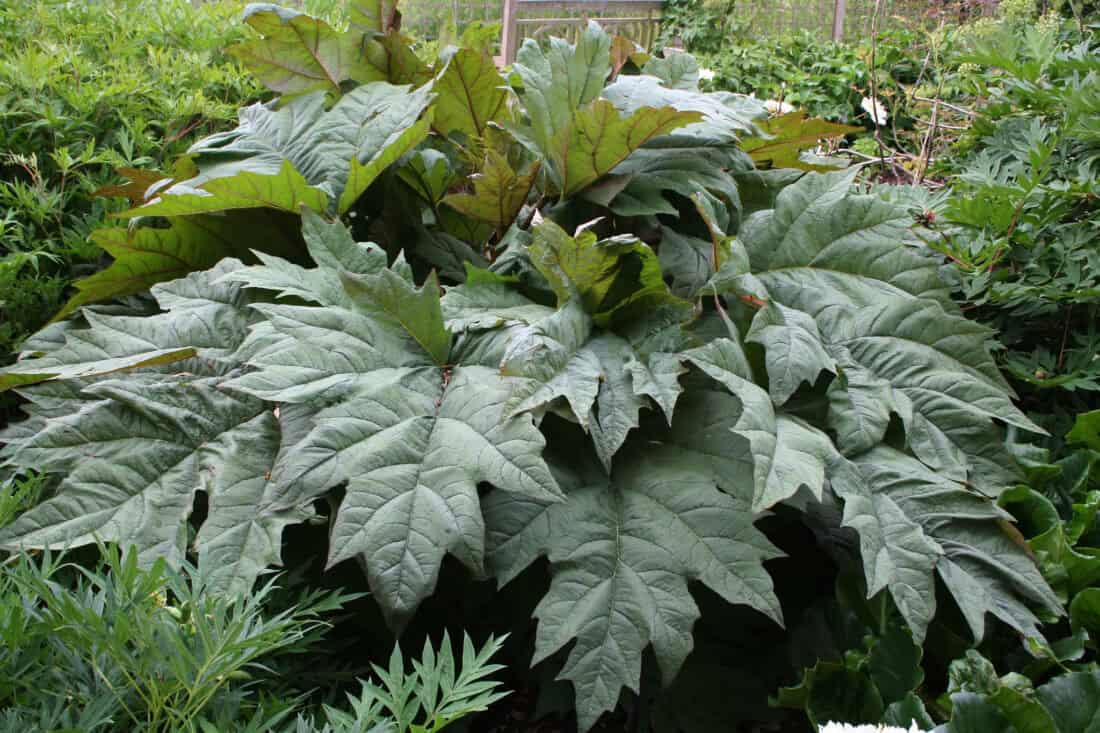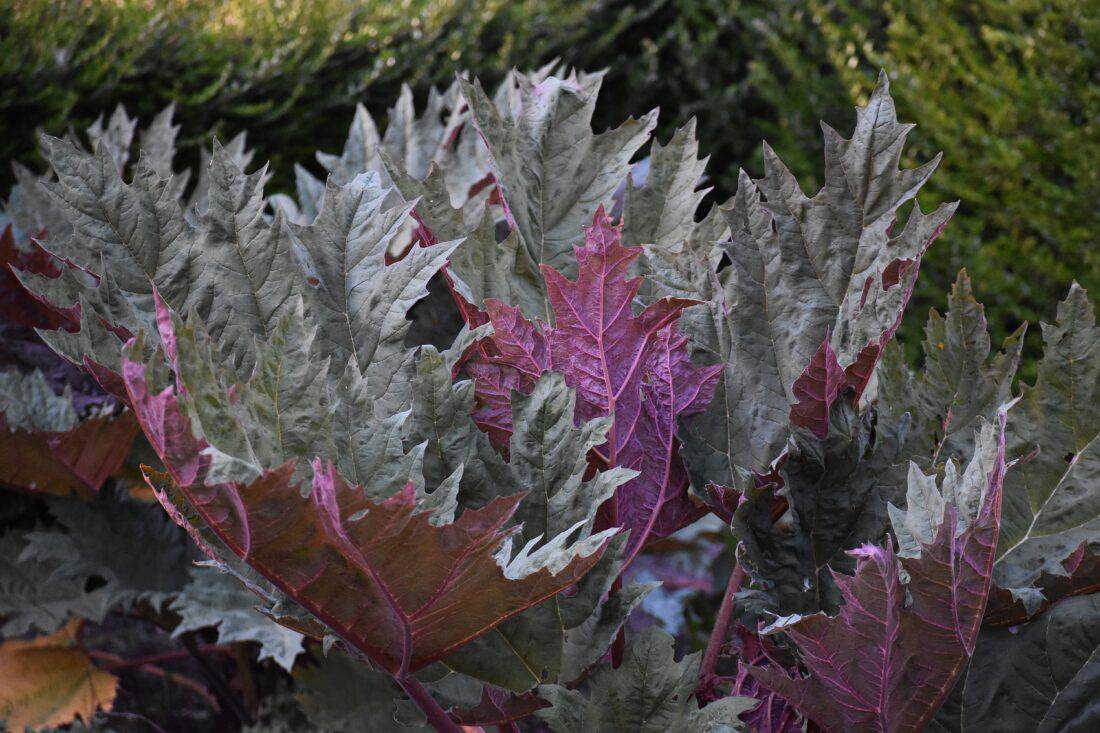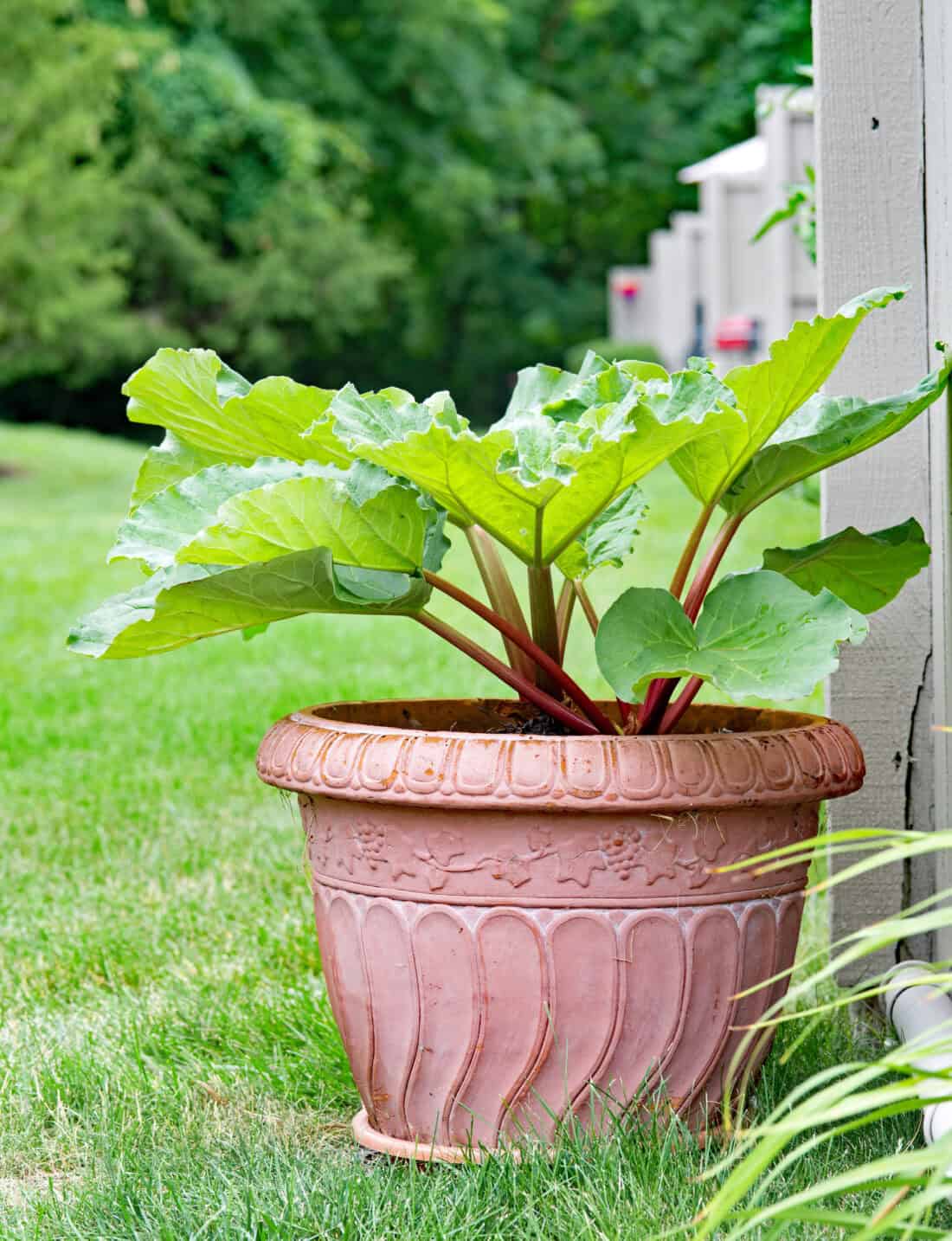I have lived in Maine for about a month now. A lot of folks told me that it would be different. It is different. Growing up in North Carolina and spending the past 8 years in Pennsylvania were quite a bit different than life along the coast of Maine. As a part of adjusting to the change of life and gardening in Maine, I will be sharing plants that grow well here in Boothbay, Maine (USDA hardiness zone 6a or the tropics of Maine) or plants that I would like to add to the gardens at Coastal Maine Botanical Garden.

One plant that took me by surprise was the giant rhubarb (Rheum spp.). In Pennsylvania, we commonly saw rhubarb stems in the grocery store or growing along Amish vegetable plots but we never saw the giant rhubarb varieties that are the legends of plant explorations and English gardening magazines.
As I was walking into the new Children’s Garden at CMBG, I swooned at the Chinese rhubarb growing right in front of me. It was almost like meeting a celebrity in person. I had read about it but here it was, actually alive!

As I made my way around the Gardens, I encountered other rhubarbs of different sizes and colors. They looked great until our first frost and then they melted like, well, cooked boiled rhubarb.
One cultivar, Rheum ‘Ace of Hearts’ has held up better and longer than the others, even after the frost. This rhubarb has wonderful deep-red stems and red leaf undersides, and it holds its leaves upright, which looks like an upside-down heart.
– Rodney
P.S. did you know that Rhubarb makes a sound when it is growing? It does – listen to it.
Rheum, commonly known as rhubarb, offers both ornamental and edible varieties suitable for North American gardeners.

Notable Rheum (rhubarb) varieties and their sources:
Rheum palmatum var. tanguticum (Chinese Ornamental Rhubarb)
This ornamental plant features large, red-tinged, palmate leaves that add dramatic flair to gardens. It’s appreciated for its unique foliage and historical significance.
Available from Strictly Medicinal Seeds
Rheum rhabarbarum (Garden Rhubarb)
The edible garden rhubarb, Rheum rhabarbarum, is also sometimes referred to as R. xhybridum or R. xcultorum, and the name R. rhaponticum (European rhubarb, a different species) is sometimes misapplied.
A classic edible rhubarb with thick, succulent red or green leafstalks up to 18 inches long. Ideal for pies, sauces, and jams. Easy to grow and a staple in many gardens. Specifically, look for varieties such as R. ‘Cherry Red’ (also known as ‘Cherry’ or ‘Early Cherry’), ‘MacDonald,’ and ‘Valentine’ and these popular varieties:
- Rheum × hybridum ‘Victoria’
A late-forcing cultivar with large, green, or speckled stalks and good flavor. Known for its reliable yields and suitability for various culinary uses. - Rheum × hybridum ‘Canada Red’
This cultivar produces tender, red stalks that are sweeter than most, making it excellent for desserts. Introduced in Canada, it’s popular among gardeners for its dependable yields. - Rheum × hybridum ‘Crimson Red’
One of the most flavorful cultivars, featuring tall stalks and dependable yields. Its brilliant red color holds up well even after cooking. ‘Crimson Red’ (also called ‘Crimson’, ‘Crimson Cherry’, or ‘Crimson Wine’)
When selecting a variety, consider your garden’s climate, soil conditions, and whether you prefer ornamental appeal or culinary use. Always purchase plants from reputable nurseries to ensure quality and authenticity.
